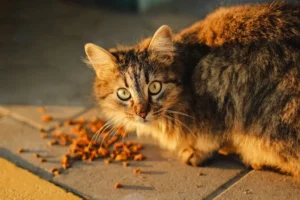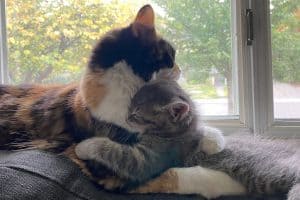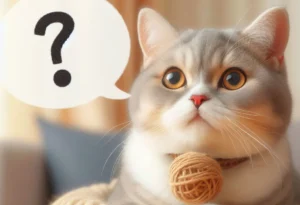Cats are mysterious creatures with a wide array of vocalizations, one of which is the peculiar sound known as “mrrp.” Have you ever wondered why cats make this unique noise? Let’s explore the reasons behind this fascinating behavior.
Cats go mrrp as a way to communicate with their humans.
The Meaning Behind the Mrrp
Have you ever wondered why your feline friend makes that adorable mrrp sound? Contrary to popular belief, cats don’t just vocalize for food or attention. When your cat lets out a mrrp, it could be their way of greeting you, expressing happiness, or seeking interaction. This gentle sound is often a sign of contentment and affection, showing that your cat is comfortable and relaxed in your presence.
Additionally, the mrrp sound can also be a form of self-soothing for cats. Just like humans may hum or whistle when they are happy or relaxed, cats may make the mrrp sound as a way to comfort themselves in stressful situations. So, next time your cat lets out a soft mrrp, know that it’s their way of communicating their emotions and seeking comfort.
For more in-depth insight on feline vocalizations, including the mrrp sound, continue reading to discover the role of vocalizations in feline communication.
Vocalization in Feline Communication
Communication is essential in any relationship, even between you and your cat. While cats are known for their independent nature, they still rely on vocalizations to communicate with their human companions and other animals. From meows and purrs to chirps and yes, the mrrp sound, each vocalization serves a specific purpose in the feline communication repertoire.
When your cat makes the mrrp sound, they are not just making noise for the sake of it. This unique vocalization can convey a range of emotions and messages, such as excitement, playfulness, or even a request for attention. By paying attention to your cat’s vocal cues, you can better understand their needs and strengthen the bond between you.
To delve deeper into the intricate world of feline communication, explore the nuances of vocalizations and how your cat uses them to express themselves. Remember, listening to your cat’s mrrp could lead to a better understanding of their thoughts and feelings.
For additional insights on feline vocalizations and communication, visit the American Association of Feline Practitioners’ guide on understanding cat behavior and vocalizations.
Instinctual Behaviors
Cats are known for their unique behaviors, and the mrrp sound is no exception. One instinctual reason why cats make the mrrp sound is to imitate the chirping noises that their ancestors made while hunting. This soft, melodic noise can mimic the sound of small prey, such as birds or rodents, which can help cats attract prey or communicate with their fellow felines during a hunt. So, the next time your cat goes mrrp, they might just be tapping into their natural instincts as skilled hunters.
Moreover, the mrrp sound can also serve as a way for cats to communicate their contentment or excitement. When a cat is feeling particularly happy or pleased, they may use the mrrp sound as a form of self-expression. So, if your cat greets you with a cheerful mrrp, it could be their way of showing affection and letting you know they’re glad to see you. Keep an eye out for these sweet sounds and cherish these moments of bonding with your furry friend.
Bonding with Your Feline Friend
Building a strong bond with your feline companion is important for fostering a loving and harmonious relationship. When your cat goes mrrp, it can be a powerful tool for strengthening your bond. By responding positively to your cat’s mrrp sounds, whether through petting, talking back, or playing with them, you are reinforcing a positive connection and showing your cat that you understand and appreciate their attempts to communicate.
Additionally, engaging in interactive play sessions with your cat can further enhance your bond. Cats often use the mrrp sound during play as a way to express their enjoyment and excitement. By responding to your cat’s mrrp with playtime, you are not only providing them with mental and physical stimulation but also creating joyful shared experiences that can deepen the bond between you and your feline friend. So, next time your cat goes mrrp, seize the opportunity to strengthen your special connection with them.
Bonus Tip: Creating a peaceful and secure environment for your cat can also help strengthen your bond. Providing cozy hiding spots, comfortable bedding, and interactive toys can make your cat feel safe and happy, encouraging them to communicate more openly through sounds like mrrp.
Strange but True: Other Odd Cat Noises
Have you ever heard your cat make a strange noise and wondered what it meant? Cats can make a variety of sounds besides the familiar meow, including chirps, trills, and yes, even mrrps! These odd noises can have different meanings, from expressing excitement or seeking attention to communicating their mood or simply saying hello. Understanding these unique sounds can help you better connect with your feline friend and decipher their feelings. So, next time your cat goes mrrp, listen closely and try to decode the message behind this curious sound.
Ways to Encourage Cat Communication
Communication with your cat is essential for building a strong bond and fostering a positive relationship. One of the key aspects of cat communication is understanding their various vocalizations, including the enigmatic mrrp sound. To encourage communication with your cat, try engaging in interactive play sessions, using a soothing tone of voice, and providing ample opportunities for socialization. By creating a supportive and stimulating environment, you can encourage your cat to express themselves more freely and enhance your mutual understanding. Remember, effective communication is a two-way street, so make sure to listen and respond to your cat’s cues with patience and empathy.
- Pay Attention to Body Language: Cats often communicate through subtle body signals, such as tail position, ear movements, and eye contact. By observing your cat’s body language alongside their vocalizations, you can gain valuable insights into their emotional state and intentions.
- Provide Enrichment Activities: Enrichment activities, such as puzzle toys, scratching posts, and interactive games, can help channel your cat’s energy and stimulate their cognitive abilities. A mentally and physically stimulated cat is more likely to engage in communication and exhibit positive behaviors.
- Establish a Routine: Cats thrive on routine and predictability. By establishing a regular feeding schedule, playtime routine, and daily interactions, you can create a sense of stability and security for your cat. Consistent routines can also help strengthen the bond between you and your feline companion.
For more insights on cat communication and behavior, check out this external resource.
Myth Busting: Common Misconceptions about Cat Noises
If you’ve ever wondered why cats make that adorable mrrp sound, you’re not alone. Many people have misconceptions about cat vocalizations, including the reasons behind that specific noise. Let’s bust some myths and shed light on the truth.
Myth 1: Cats Only Meow to Humans Contrary to popular belief, cats don’t just meow at humans. In fact, cats use meows and mrrps to communicate with other cats too. These vocalizations can convey a range of messages, from simple greetings to warning calls.
Myth 2: Cats Only Mrrp When Hungry While cats might mrrp to ask for food, this isn’t the only reason they make that sound. Cats use a variety of vocalizations to express different needs and emotions, so the mrrp could signify anything from excitement to curiosity.
Myth 3: Cats Always Mrrp When Happy Although a cat’s mrrping can indicate contentment, it’s not always a sign of pure joy. Cats can also mrrp when they’re feeling playful, anxious, or even in pain. So, don’t assume that every mrrp means your feline friend is in a blissful state.
Remember, cats are complex creatures with a diverse range of vocalizations, and the mrrp is just one piece of the puzzle when it comes to understanding their communication.
Fun Facts about Feline Communication
As we delve deeper into the fascinating world of cat communication, let’s uncover some fun and interesting facts about how cats use vocalizations to express themselves, including the mysterious mrrp sound.
Cats can make over 100 different sounds, each serving a unique purpose in their communication repertoire. From chirps and trills to hisses and growls, cats have a rich language that goes beyond simple meows and mrrps.
The pitch and tone of a cat’s vocalizations can vary based on their emotional state. For example, a high-pitched mrrp might signal excitement or playfulness, while a low-pitched one could indicate fear or aggression.
Cats can also use body language in conjunction with vocalizations to convey their message more effectively. Pay attention to your cat’s posture and facial expressions when they mrrp to get a better understanding of what they’re trying to communicate.
By learning more about how cats communicate through vocalizations, including the elusive mrrp sound, you can deepen your bond with your feline friend and gain insight into their unique world.
Alex, a passionate animal lover, has experience in training and understanding animal behavior. As a proud pet parent to two dogs and three cats, he founded AnimalReport.net to share insights from animal experts and expand his knowledge of the animal kingdom.









